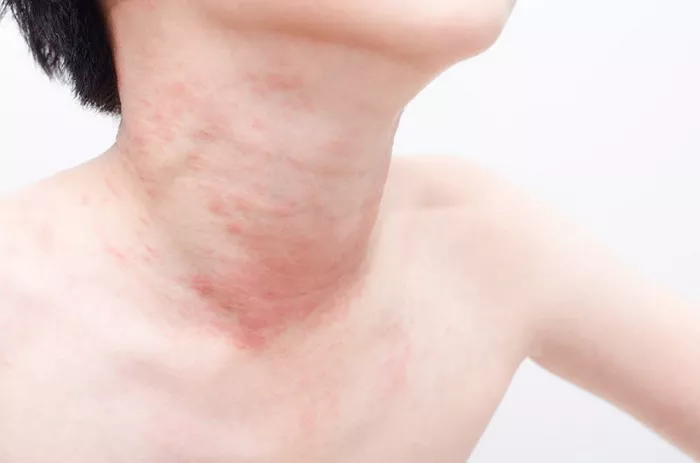Hives, medically known as urticaria, are a common skin condition characterized by raised, red, itchy welts that can appear anywhere on the body. While hives themselves may not typically be considered dangerous, they can cause discomfort and distress to those affected. However, it’s essential to understand the potential risks associated with hives, particularly in certain situations or for individuals with specific medical conditions. In this article, we’ll explore the nature of hives, potential dangers they may pose, and strategies for managing and mitigating these risks.
Understanding Hives: Causes and Symptoms
Before delving into the potential dangers of hives, it’s crucial to understand what causes this condition and how it manifests. Hives occur when certain cells in the skin release histamine and other chemicals into the bloodstream, leading to a localized inflammatory response. Common triggers for hives include:
1. Allergens: Foods, medications, insect stings, and environmental factors such as pollen or pet dander can trigger an allergic reaction that results in hives.
2. Non-Allergic Triggers: Hives can also be triggered by non-allergic factors such as stress, exercise, temperature changes, or pressure on the skin.
The symptoms of hives typically include raised, red welts that may vary in size and shape, intense itching, and sometimes a burning or stinging sensation. In most cases, hives resolve on their own within a few hours to a few days, although they can be recurrent or chronic in some individuals.
Potential Dangers of Hives
While hives themselves are generally not considered dangerous, they can lead to complications in certain situations or for specific populations. Some potential risks associated with hives include:
1. Severe Allergic Reactions:
In some cases, hives may be a symptom of a severe allergic reaction called anaphylaxis. Anaphylaxis is a medical emergency characterized by symptoms such as difficulty breathing, swelling of the face or throat, rapid heartbeat, and a drop in blood pressure. If left untreated, anaphylaxis can be life-threatening.
2. Impaired Quality of Life:
Chronic hives can significantly impact an individual’s quality of life due to the persistent itching, discomfort, and emotional distress they cause. The constant urge to scratch affected areas can lead to skin damage, infections, and sleep disturbances, further exacerbating the situation.
3. Underlying Medical Conditions:
In some cases, hives may be a symptom of an underlying medical condition, such as autoimmune disorders, thyroid disease, or infections. Identifying and addressing the underlying cause is essential for managing hives effectively and preventing potential complications associated with the underlying condition.
4. Risk of Secondary Infections:
Prolonged scratching of hives can break the skin barrier, increasing the risk of bacterial or fungal infections. These infections can further exacerbate the symptoms and prolong the healing process, requiring medical intervention.
5. Impact on Mental Health:
Living with chronic hives can take a toll on mental health, leading to feelings of frustration, anxiety, and depression. The constant physical discomfort and unpredictability of hives can interfere with daily activities, work, and social interactions, affecting overall well-being.
Managing the Risks of Hives
While hives themselves may not be inherently dangerous, it’s essential to take steps to manage and mitigate the potential risks associated with this condition. Here are some strategies for effectively managing hives:
1. Identify Triggers:
Keep a journal to track potential triggers for hives and try to avoid or minimize exposure to known triggers whenever possible. This may involve dietary modifications, lifestyle changes, or environmental adjustments.
2. Seek Medical Evaluation:
If you experience recurrent or chronic hives, it’s essential to seek medical evaluation to identify any underlying causes or contributing factors. Your healthcare provider may recommend allergy testing, blood tests, or other diagnostic measures to determine the root cause of your hives.
3. Follow Treatment Recommendations:
Depending on the severity and underlying cause of your hives, your healthcare provider may recommend various treatment options, including over-the-counter antihistamines, prescription medications, or lifestyle modifications. It’s crucial to follow your healthcare provider’s recommendations and adhere to your treatment plan consistently.
4. Practice Good Skin Care:
Take steps to soothe and protect your skin to prevent further irritation or damage. This may include using gentle cleansers and moisturizers, avoiding harsh soaps or skincare products, and applying cool compresses to affected areas to relieve itching and inflammation.
5. Manage Stress:
Stress can exacerbate hives symptoms in some individuals, so it’s essential to practice stress management techniques such as mindfulness, relaxation exercises, yoga, or meditation. Finding healthy coping mechanisms for managing stress can help reduce the frequency and severity of hives outbreaks.
6. Be Prepared for Emergencies:
If you have a history of severe allergic reactions or anaphylaxis, it’s crucial to carry an epinephrine auto-injector (such as an EpiPen) with you at all times and know how to use it in case of an emergency. Prompt administration of epinephrine can be life-saving in the event of an anaphylactic reaction.
7. Seek Support:
Living with hives, particularly chronic hives, can be challenging both physically and emotionally. Don’t hesitate to seek support from healthcare professionals, support groups, or mental health professionals who can provide guidance, encouragement, and understanding.
Conclusion
In conclusion, while hives themselves may not be inherently dangerous, they can pose risks and complications in certain situations or for specific individuals. Understanding the potential dangers associated with hives and taking proactive steps to manage and mitigate these risks is essential for maintaining optimal health and well-being. By identifying triggers, seeking medical evaluation and treatment, practicing good skin care, managing stress, and being prepared for emergencies, individuals affected by hives can effectively manage their condition and minimize its impact on their lives. If you or someone you know is experiencing hives or related symptoms, consult with a healthcare professional for proper evaluation and management.























